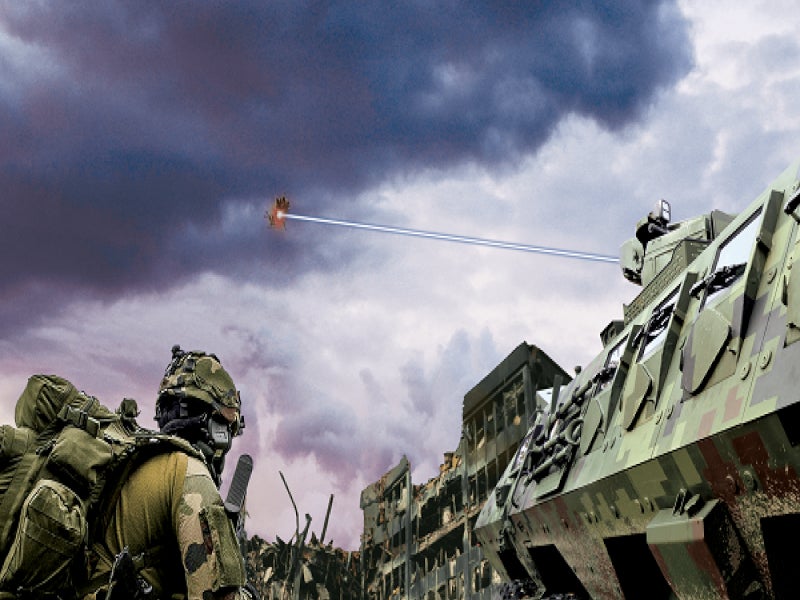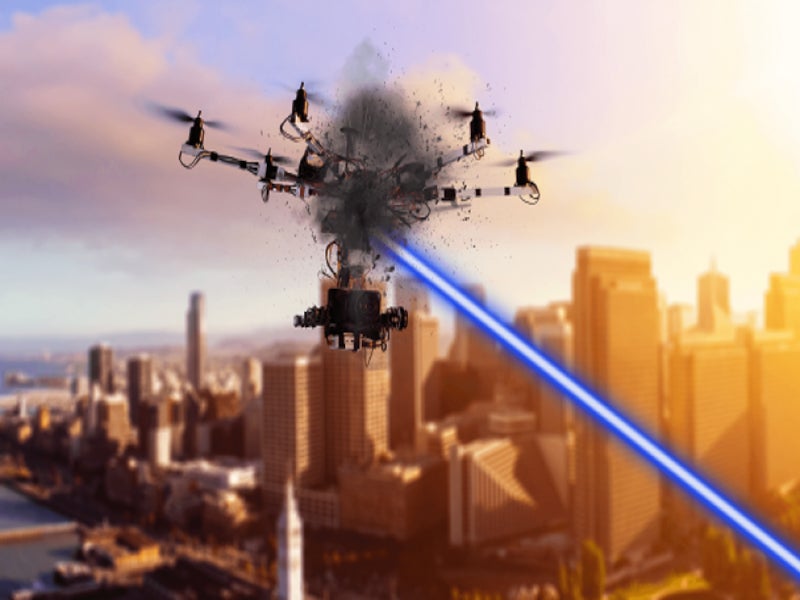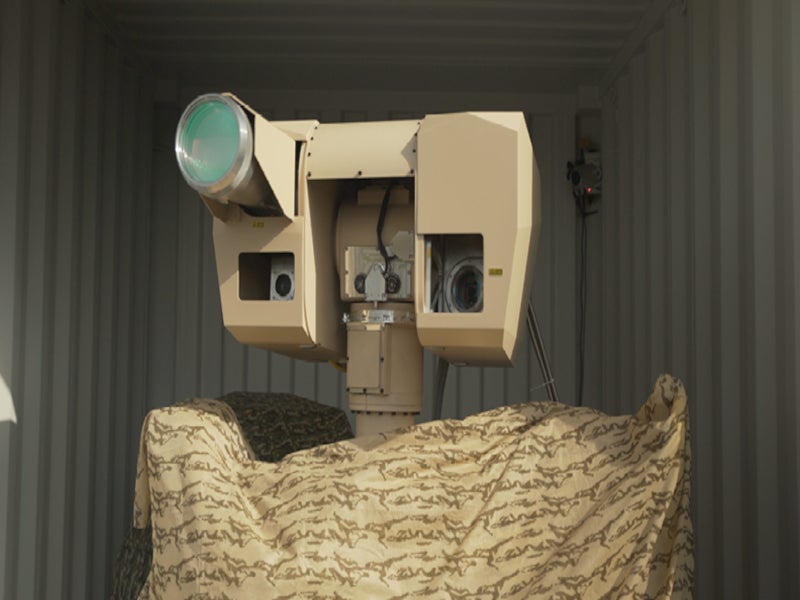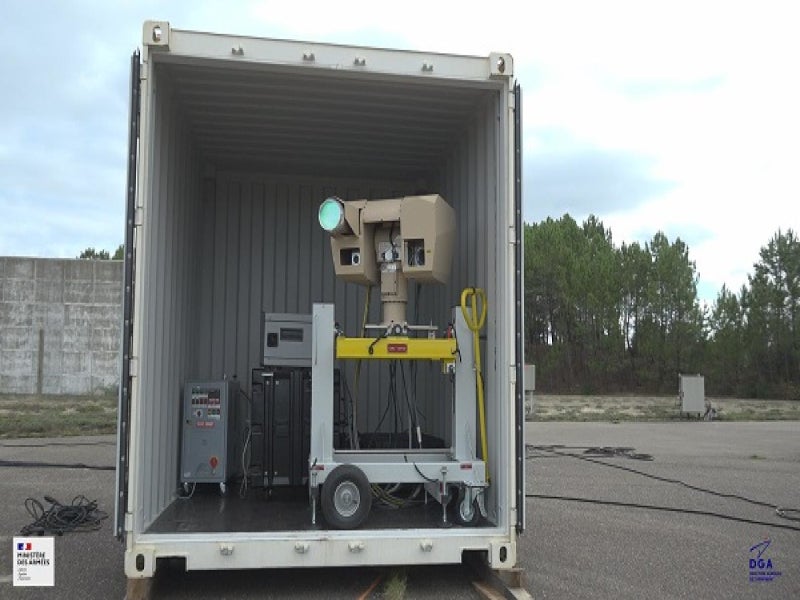HELMA-P is a laser counter-drone weapon system designed to safeguard sensitive locations, military bases, critical infrastructure, and public gatherings from unauthorised or hostile drones.
The weapon system’s inception traces back to 2017, with the French Directorate General of Armaments (DGA) and the French Defense Innovation Agency (AID) nurturing its development until 2021.
Cilas, a laser and optics technology developer based in France, is working on the prototype of the system for the DGA. It has been selected to protect the 2024 Olympic Games from malicious drones using its laser weapons.
The company signed a pivotal agreement with national aerospace research body ONERA in July 2023 to further the development of these laser weapons.
HELMA-P is financially supported by AID, the Centre-Val de Loire region, and France-based aerospace company ArianeGroup.
The deployment of the HELMA-P system will enable military forces to significantly impair the enemy’s reaction and defensive capabilities before any hostile action occurs.
HELMA-P weapon system development details
The HELMA-P system underwent rigorous evaluation in a terrestrial setting at the DGA Missile Testing Expertise and Testing Center in Biscarrosse during 2020 and 2021, boasting an impressive 100% success rate.
The Ministry for the Armed Forces initiated the Lutte anti-drones (LAD) programme in February 2021, under the leadership of the DGA, to counter the rapidly evolving threat posed by mini and micro uncrewed aerial systems (UASs). The LAD programme focused on the detection, identification, and neutralisation of UASs, which subsequently paved the way to produce the first operational prototype of HELMA-P.
The AID played a crucial role in accelerating the HELMA-P anti-drone innovation project, with Cilas spearheading the testing and demonstration campaigns at DGA Missile Testing’s Landes site.
The DGA awarded the anti-drone combat laser (L2AD) contract to Cilas in June 2022. It encompasses the procurement of an operational prototype laser system capable of identifying, tracking, and neutralising mini and micro drones.
The L2AD contract is integral to the anti-drone fight programme named the PARADE (Modular Deployable Anti-Drone Protection), with a budget ceiling of €10m ($10.4m). The contract’s objectives include deploying the prototype at the 2024 Olympic and Paralympic Games and conducting a study to ensure the laser technology’s maturity, culminating in a vehicle demonstrator.
An essential aspect of the L2AD project is the emphasis on the laser system’s safe operation, which involves implementing a suite of hardware and software safeguards and refining the concept of use with the armed forces.
HELMA-P laser counter-drone weapon system details
HELMA-P is a multi-kilowatt (kW) laser effector with modular architecture and radical effect. It is equipped with a two-axis turret necessary to address moving targets. The turret carries a set of optical sensors and a laser weapon.
The system is effective at greater distances than other anti-UAV technologies and can take precise shots during the day or night. It is immune to jamming and features extreme stealth capabilities.
The HELMA-P system offers a tiered approach to addressing drone threats, ranging from blinding surveillance equipment to neutralising mini or micro drones weighing between 100g and 25kg, by altering their structure, resulting in their rapid descent.
HELMA-P can be integrated with various detection and surveillance systems, such as optical, radar, and sound. It requires minimal logistics since it does not rely on ammunition and is designed to engage moving targets with extreme precision.
It is compatible with any command and control (C2) process or a battle management system (BMS), enabling accurate, immediate, and sustained fire.
HELMA-P laser system features
The HELMA-P laser system is characterised by its extensive operational range, capable of inflicting optical damage up to 3,000m and maintaining a utilisation range of up to 1,000m. Its power levels can vary from optical jamming to outright destruction or ignition.
The system wields a multi-kilowatt laser beam and offers a wide field of view of +/- 180°. It operates effectively within a broad temperature range of -30°C to 60°C, attributed to its integrated thermal regulation.
The absence of ammunition requirements and its compatibility with both battery and power grid sources underscores the system’s operational efficiency and readiness.
Security features of HELMA-P
The HELMA-P system features increased security through various advanced technologies and methodologies to ensure thorough monitoring and control, including light detection and ranging (LIDAR) remote sensing method and automatic dependent surveillance-broadcast (ADS-B) surveillance technology.
HELMA-P prototype testing details
The initial week of testing, part of a five-week schedule spread between 2020 and 2021, yielded promising results, particularly in terms of the system’s swift neutralisation capabilities. The tripod-mounted HELMA-P system demonstrated its efficacy by “fixing” shots at distances of up to a kilometre, successfully destroying several drones in flight.
The test campaigns not only validated the operational impact of the HELMA-P but also marked a significant step towards the experimental use of power lasers. The DGA Project Engineering (DGA IP) led the technical aspects of the project, coordinating closely with the centres involved.
In June 2023, the DGA, the French Navy, and Cilas carried out a test campaign for HELMA-P aboard the air defence frigate Forbin in the Mediterranean Sea. Following its successful land-based tests, the system once again proved its precision and effectiveness at sea, neutralising hostile drones and signalling the potential for further prototype development and eventual integration onto navy vessels.
PARADE programme details
The PARADE programme was announced in April 2022 to acquire advanced protection systems for detecting, identifying, classifying, and neutralising drones through jamming. These systems are designed to enhance 360° protection for sensitive military sites and vital operators.
The systems will complement existing anti-drone resources in the French military, including the MILAD, ARLAD, and BASSALT systems. The HELMA-P system will be able to integrate with the PARADE system developed by Thales and CS Group.







